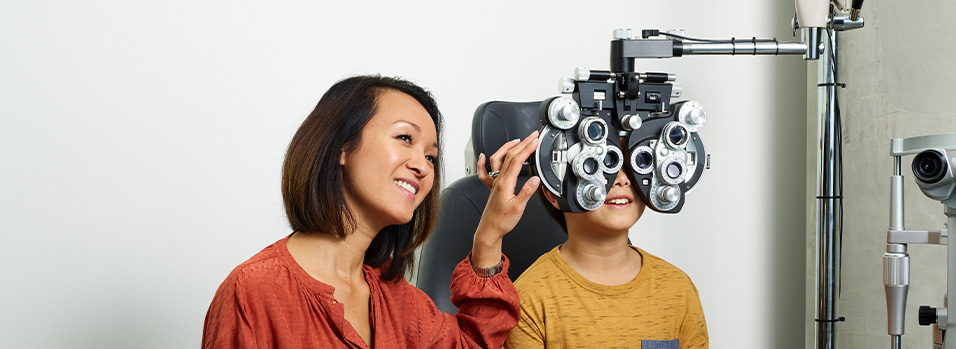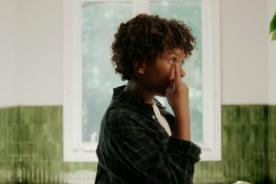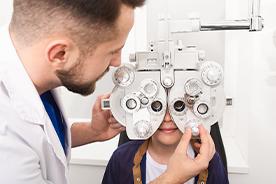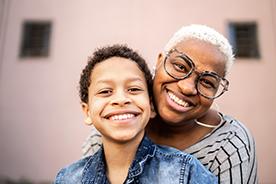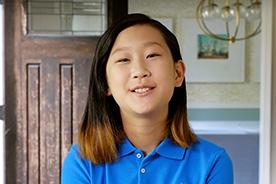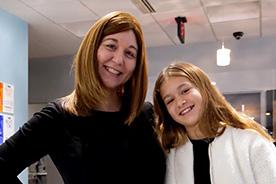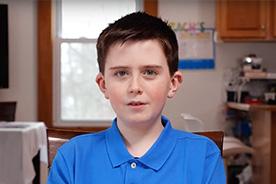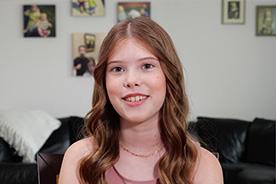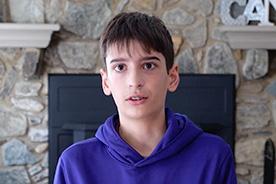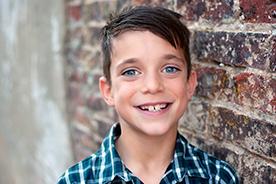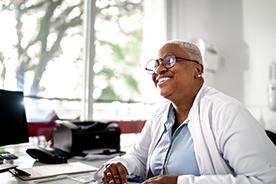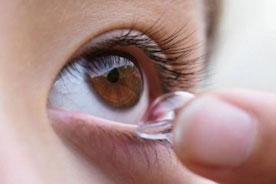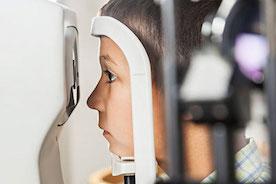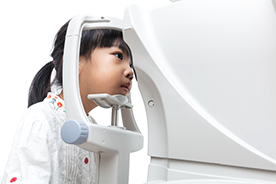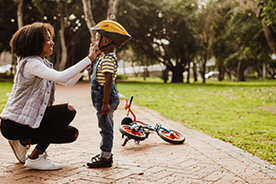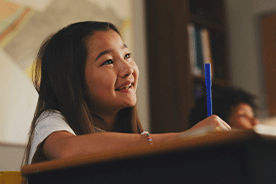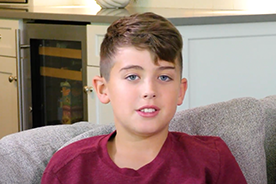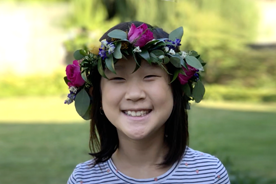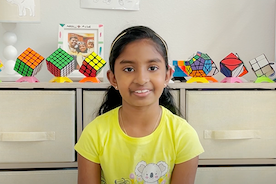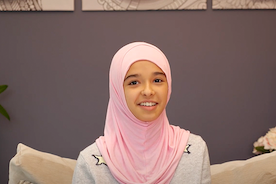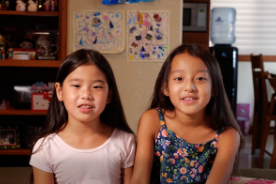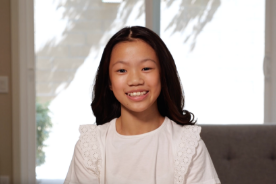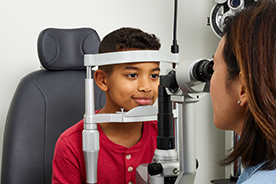Every child deserves good eye care—and that means starting vision tests for kids at a young age. Vision plays an important role in a child’s physical, mental, academic, psychological and social wellbeing1, and as they’re developing and growing (what feels like too quickly sometimes), so are their eyes.
A child’s eyes go through rapid development and changes, especially in the first six years of their life2. But fewer than 15% of preschool children receive an eye exam by an eye care professional, according to the Centers for Disease Control and Prevention.3
Whether you’ve scheduled your child’s first appointment, or they’ve seen an eye care professional before, here are some helpful tips you should be aware of before you walk into their first—or next—appointment.
When should my child get their first eye test?
“Believe it or not, a child should get their first eye exam when they’re 6-12 months old; that’s considered infancy,” says CooperVision Senior Manager of Myopia Management Dr. Justin Kwan, OD, FAAO. “From there, they need another at age 3, prior to entering kindergarten and every year thereafter. During this time, their eyes are growing so much, and we really need to make sure they are seeing clearly and comfortably so they have the best shot at learning. During these fast-learning years, if their vision development or eye development is off track, there are ways for optometrists to determine that and get them back on track. The first step is to schedule a comprehensive eye exam.”
Dr. Kwan’s recommendation is supported by the American Optometric Association (AOA), which also recommends children receive comprehensive eye exams on a regular schedule that begins before you might think—in infancy.3
6-12 months: A comprehensive baseline eye exam3
This is the time to talk with your doctor about any family history of childhood vision problems. This comprehensive eye exam completed by an optometrist or ophthalmologist is different than one at a pediatrician’s office. An eye care professional, at the comprehensive baseline eye exam, will also check visual acuity, eye movement and alignment, refraction and internal ocular health. Also, during your infant’s eye exam, they’ll check the red reflex (light reflected through the pupil from the back of the eye) using a handheld device called an ophthalmoscope. They’ll look at the size and shape of the pupil and external parts of the eye, too.4
3-5 years old: At least one comprehensive eye exam to check for conditions that could have long-term effects3
Visual acuity screening is recommended at 4 and 5 years old, as well as in cooperative 3-year-olds. This involves your child identifying or matching letters or symbols from a set distance.4
6 years old and beyond: An annual comprehensive eye exam starting before they enter first grade3
A comprehensive exam for an older child is like that of an adult but may include alternative methods or testing to gather the information in a kid-friendly way. During the exam, the eye doctor evaluates your child’s visual acuity or how well they see, eye teaming and tracking skills, the refraction or prescription of the eyes, and overall eye health. Additional testing may be performed that are key for learning and reading skills.
How often should I take my child to their eye doctor? What to expect from their first visit into their teens
Children are evaluated by their pediatricians during the first few months of life to identify any eye or visual concerns. After that, children should complete an eye exam between 6 and 12 months old with an eye care provider for additional testing and examination. Following, children should be examined again by their eye doctor at 3-5 years old and before entering school as a kindergartener or first-grader.
The AOA suggests children have their eyes examined every two years after that if no vision correction is required.3 Children who need eyeglasses or contact lenses should be examined annually.5
You may remember vision screenings when you were in school, and they still happen today. Though it may help identify some concerns, this screening isn’t comprehensive enough, and it shouldn’t replace visiting an eye care professional. School vision screenings miss up to 75% of children with vision problems, and of those children who are found to have eye problems through school screenings, 61% never follow up with a doctor or get help.3
Depending on your child’s age, vision screenings may be performed in different ways. Some need your child’s cooperation to read or match images in an age-appropriate way. Others use special tools to measure the eye position, reflection of light off the back of the eye or focus of light into the eye.4
How can a vision test for my child benefit them?
Your child’s vision is a gift you don’t want to take for granted. It plays an important role in their development from infancy through school-aged and teen years. A child’s eye problem symptoms can include blurry vision, eye rubbing, headaches and the child squinting their eyes or sitting too close to the television.
An uncorrected vision problem also can affect a child’s ability to learn, see the board at school, socialize, play indoor and outdoor activities, prevent sports injuries caused by vision issues5 and more. Correcting vision problems with eyeglasses or contact lenses can address many vision problems and, in turn, enhance vision skills and improve academic and sports vision performance.5
At the end of the day, getting your child’s vision tested at infancy—and following timeline recommendations—sets them up for success not only in their eye health, but in all areas of life where their eyes and vision have an impact. Which is everything.
Scheduling your child’s first—or next—eye exam
An optometrist can find and treat vision problems early and often at your child’s next eye test, and the earlier they’re treated, the better. It’s important to remember that each child’s eye treatment will be different, but if glasses or contacts are suggested after their next eye exam, you’ll be one day closer to getting your child the vision they need—and deserve.
Find a MiSight® certified eye care professional for your age-appropriate child and learn about free trials and rebates offered.

